Laid down 24 September 2007 Acquired 17 September 2012 Launched 12 February 2011 | Awarded 1 June 2006 Christened 14 May 2011 Construction started 24 September 2007 | |
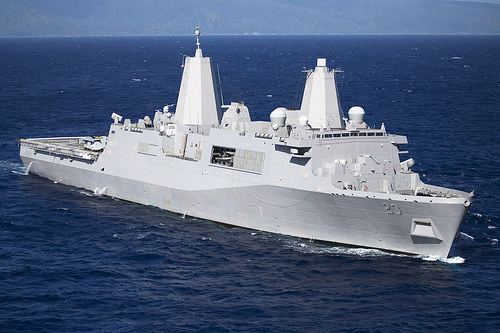 | ||
Namesake City of Anchorage, Alaska | ||
USS Anchorage (LPD-23), a San Antonio-class amphibious transport dock, is the second ship of the United States Navy to be namesake of the city of Anchorage, Alaska.
Contents
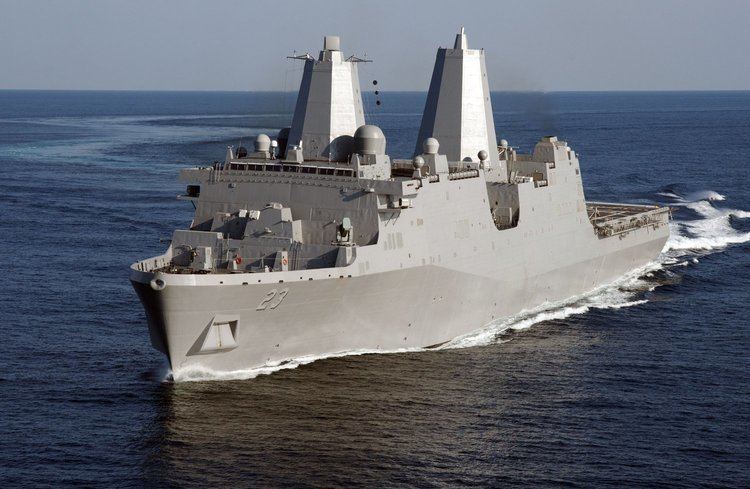
Helicopter training uss anchorage lpd 23
Construction
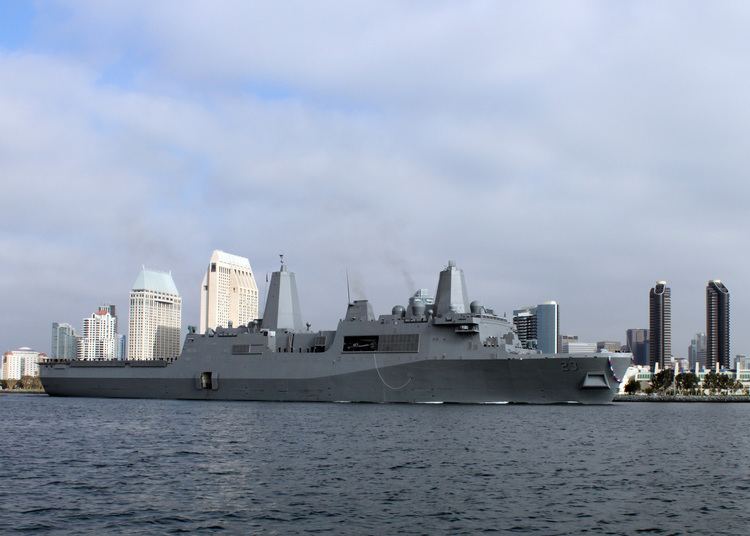
Anchorage's keel was laid down on 24 September 2007, at the Avondale Shipyard near New Orleans, Louisiana, then owned by Northrop Grumman Ship Systems. The ship was launched on 12 February 2011.; sponsored by Mrs. Annette Conway, wife of Gen. James T. Conway, USMC (Ret.) former Commandant of the Marine Corps; She was christened two months later, on 14 May — the first ship christened by Huntington Ingalls Industries since Northrop Grumman spun off its shipbuilding divisions as a separate company. The ship's sponsor is Annette Conway, wife of former Marine Corps Commandant General James T. Conway. The ship was formally delivered and accepted by the US Navy on 17 September 2012. Anchorage was commissioned 4 May 2013, in her eponymous city.
Service history
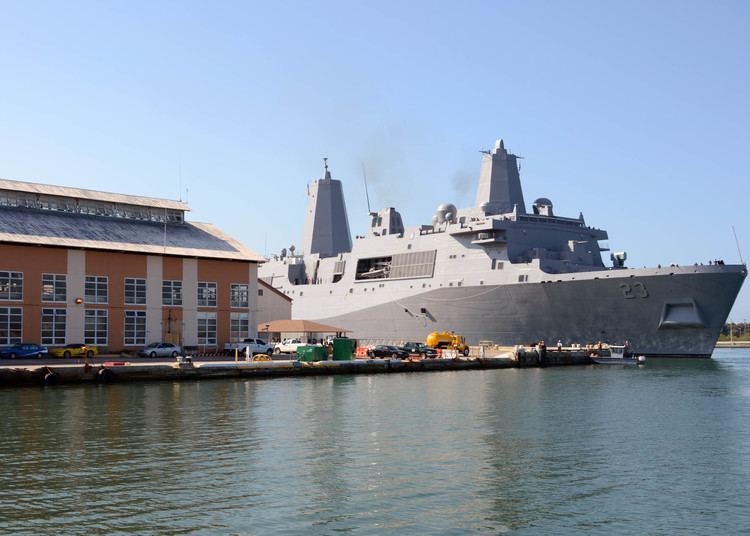
In early August 2014, Anchorage participated in Underway Recovery Test 2, rehearsing scenarios for recovering an Orion space capsule.

Senior project managers from the National Aeronautics and Space Administration (NASA), who oversaw the Exploration Flight Test 1 (EFT-1) for the uncrewed Orion spacecraft, conferred with Rear Admiral Fernandez L. Ponds, commander Expeditionary Strike Group (ESG) 3, and Captain William R. Grotewold, the ship’s commanding officer, on board San Diego at her home port of San Diego, 12 September 2013. They discussed plans to retrieve Orion’s space capsule during her splashdown in a scheduled test off the coast of Southern California.
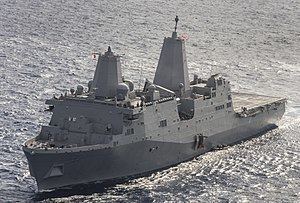
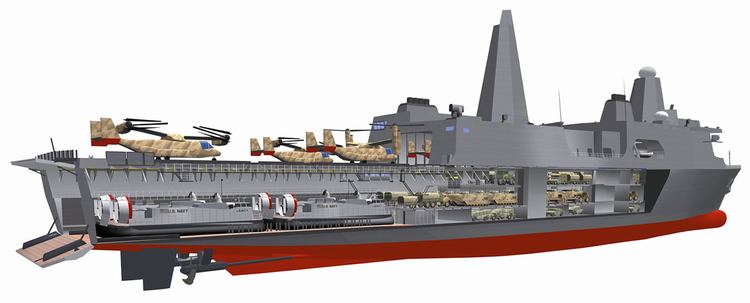
The space agency’s planners intended Orion to reach an altitude of nearly 3,600 mi (5,800 km) above the Earth’s surface during EFT-1. Following the test flight, she was to reenter the atmosphere at a speed of more than 20,000 mph (32,000 km/h) and splashdown in the Pacific. The flight was to test the capsule’s avionics, heat shield#Space, and parachutes, and the Navy was tasked to locate and recover the craft.
“NASA did a trade study whether they wanted Orion to land on the ground or in the water,” Andy Quiett, Detachment 3 deputy operations lead for the Orion program and Department of Defense (DoD) liaison for NASA said, “and because of the size, weight and the deep space requirements of the vehicle, they determined it needed to land in water.” Orion’s life support, propulsion, thermal protection, and avionics systems enable the spacecraft to extend the duration of her deep space missions, as part of the goal to eventually land on Mars.
NASA marked a major milestone in the agency’s program to reestablish America’s manned space program when it carried out EFT-1 with Orion on 5 December 2014. Orion launched atop a Delta IV rocket from Space Launch Complex 37B at the Cape Canaveral Air Force Station, Florida, made two orbits of the planet during a four and a half hour mission, and splashed down in the Pacific. Anchorage, Military Sealift Command-manned salvage ship Salvor, Helicopter Sea Combat Squadron 8 (HSC-8), EODMU-11, Mobile Diving and Salvage Company 11-17, Fleet Weather Center San Diego, and Fleet Combat Camera Pacific took part in the recovery when the spacecraft splashed down. Anchorage recovered Orion’s crew module, forward bay cover, and parachutes. A bridge team especially trained for the operation maneuvered Anchorage alongside Orion, and lowered small boats to retrieve her. Divers attached lines from the small boats to guide the capsule toward Anchorage, where a NASA-designed winch hauled the module into the well deck. “We practiced this recovery many times with safety as the number one priority,” Anchorage's Chief Boatswain’s Mate Jason B. Roberts explained. “The sailors were focused and completed the mission at hand successfully.”
